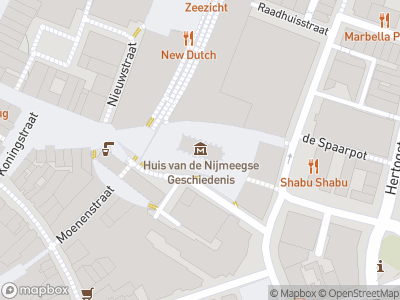The Mariënburgkapel was built around 1430 as part of a cloister complex, immediately outside the city walls. The convent was separated from the city by high walls. It now houses the Home of Nijmegen History.
Devotion
At the end of the 15th century the complex lay within the walls, but it remained a little world on its own. The Mariënburgkapel belonged to the convent of the Sisters of the Common Life, indicating that this was a community, not of nuns but of unmarried women who wished, without taking strict vows, to serve God on a voluntary basis. The sisters placed themselves under the supervision of a Mistress, whom they elected from their midst every year. The women earned their living by doing manual work. Their devout, modest way of life was a new phenomenon and was therefore referred to as Modern Devotion. The movement preached against the decline of spirituality and morality in those days.
Mariaberg
The complex was given the name Mons Mariae ‘Mariaberg’ in Dutch. The name comes back in the name of the present-day square, De Mariënburg. The chapel itself had two floors. Mass was followed by lay people below and the nuns on the upper floor, without them being able to see each other. This was in keeping with the closed nature of the convent order. The religious function of the building came to an end after one and a half centuries. Following the capture of Nijmegen by Prince Maurits in 1591, the practice of Roman Catholicism was banned. The remaining residents of the convent were allowed to stay on in the complex in return for payment. However, in 1626 the last nun died a lonely death and the convent was closed.
The chapel
The Mariënburgkapel was used in the following centuries as a hospital, peat store, theatre, cotton mill, hayshed, clothing warehouse, prison, music hall, fencing school, equine hospital, municipal museum, archive, art gallery and much more. In the course of the 19th century the convent was demolished, with only the chapel remaining. The chapel became part of the thoroughly renovated Mariënburgplein (Mariënburg Square) in 2000.












